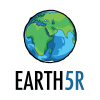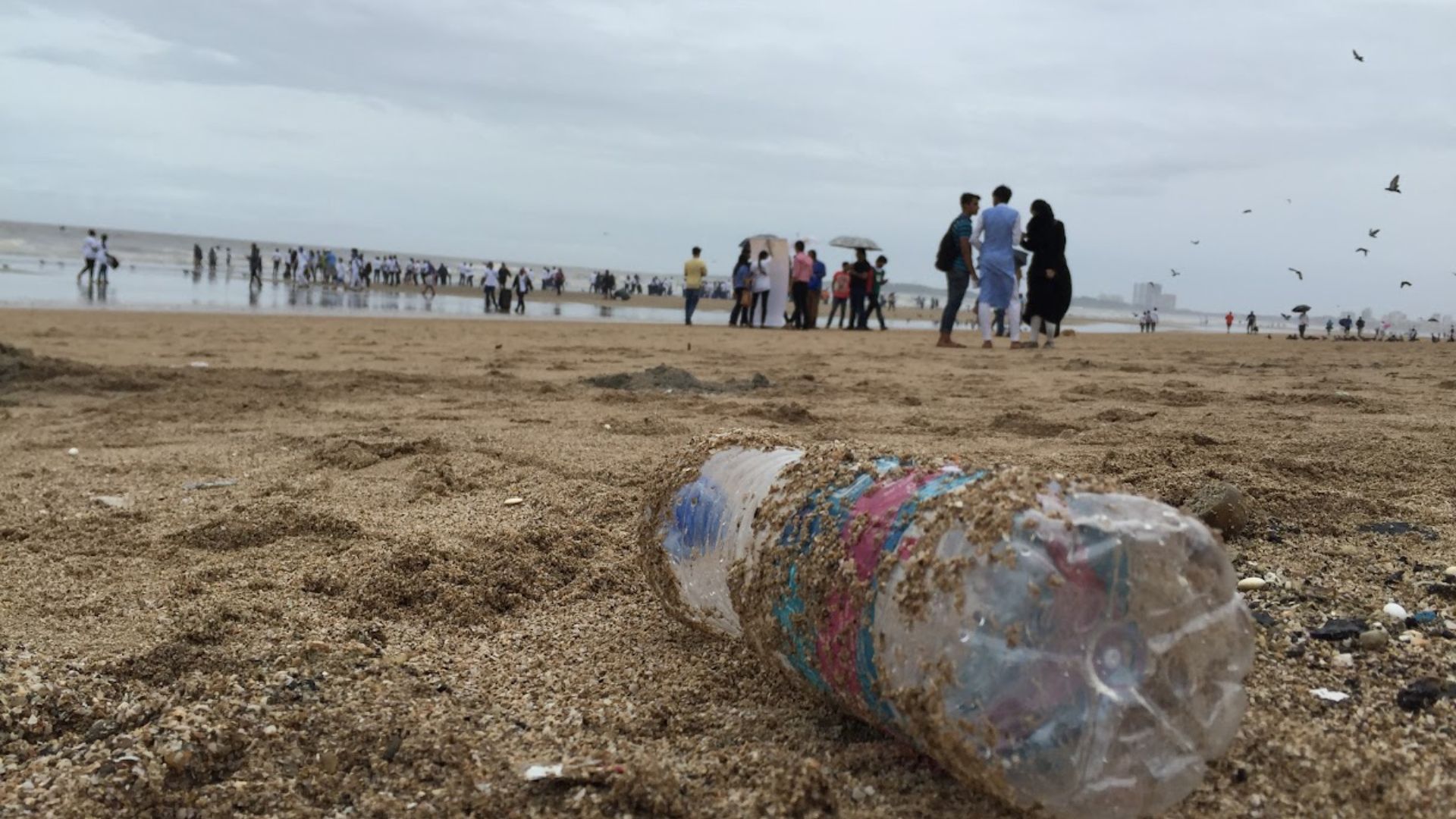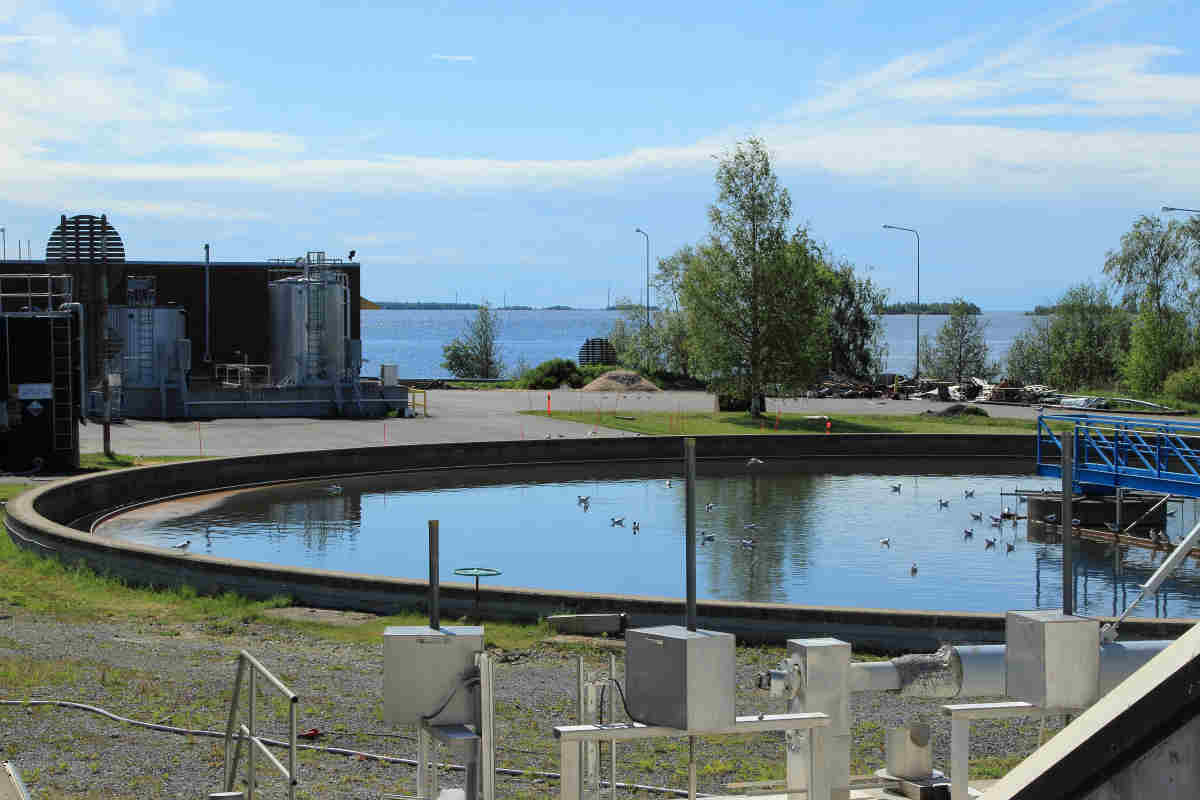The world’s oceans are drowning in plastic. An estimated 11 million metric tonnes of plastic enter marine ecosystems each year—a number projected to nearly triple by 2040 if no action is taken. This crisis threatens marine biodiversity, contaminates seafood chains with microplastics, and inflicts significant economic damage on coastal communities reliant on tourism and fishing.
Among the most affected zones are densely populated coastal regions, particularly in developing countries, where uncollected waste and riverine plastic flows are the primary culprits. Addressing this challenge demands not only large-scale cleanup but also systemic interventions in how coastal waste is managed. Coastal waste recovery is a vital frontline defence against marine plastic pollution.
It targets the crucial interface between land and sea—intercepting plastics before they are irretrievably lost to the ocean. Here, the role of Earth5R, a Mumbai-based environmental organization, becomes pivotal. Earth5R’s model emphasizes community-driven action, circular economy principles, and environmental education to create self-sustaining, locally embedded waste recovery systems.
This article unpacks Earth5R’s Coastal Waste Recovery and Marine Plastic Mitigation Framework, examining its methodology, scientific foundation, and alignment with the UN Sustainable Development Goals (SDGs) and the Blue Economy. Through evidence-backed insights, it explores how this framework could serve as a scalable model for global coastal resilience.
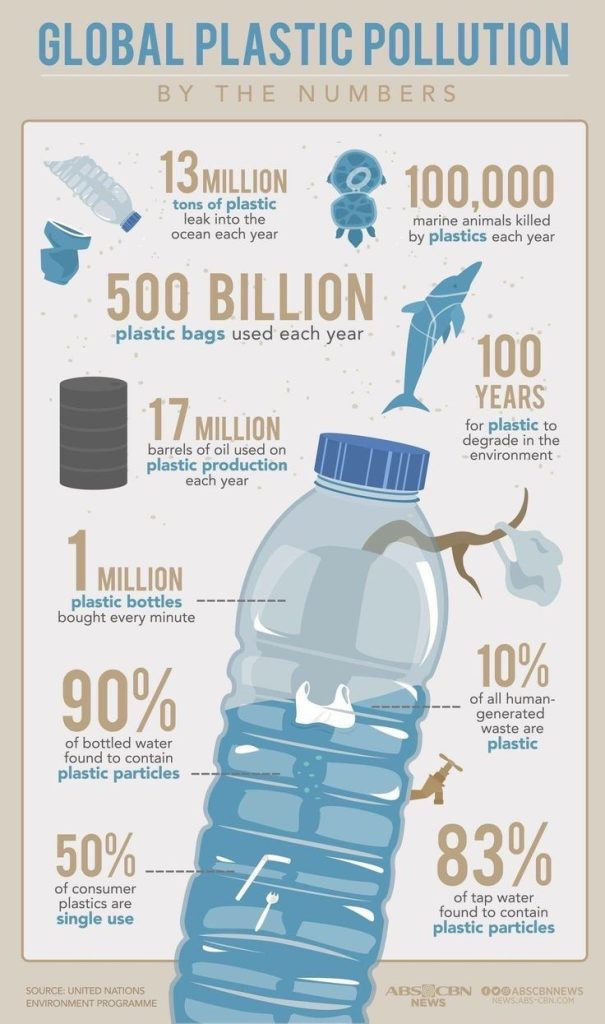
This infographic highlights the staggering scale of global plastic pollution, revealing that 13 million tonnes leak into oceans annually and 100,000 marine animals die each year due to plastic waste. It also shows the pervasive presence of microplastics in our lives—with 90% of bottled water and 83% of tap water found to contain plastic particles.
The Marine Plastic Problem: Global Context
The marine plastic crisis is among the most pressing environmental challenges of our time. According to the United Nations Environment Programme (UNEP), over 300 million tonnes of plastic are produced annually, of which at least 11 million tonnes leak into oceans every year. The OECD’s Global Plastics Outlook (2022) projects that this leakage could reach 29 million tonnes annually by 2040 without significant policy shifts.
Most of this waste originates from land-based sources such as mismanaged municipal waste, stormwater runoff, and riverine transport—transforming coastlines into plastic dumping grounds. The environmental consequences are profound. Plastics in the ocean degrade into microplastics, which have been found in the digestive systems of over 700 marine species, including commercially important fish and shellfish.
These microplastics bioaccumulate through food chains, eventually reaching humans. Studies have detected microplastics in human blood, lungs, and even placental tissue, raising alarming questions about long-term health implications. Furthermore, entanglement and ingestion of plastic waste lead to injuries, starvation, and death in marine wildlife. The economic toll is equally significant.
The Asia-Pacific Economic Cooperation (APEC) estimates the cost of marine plastic pollution to the region’s tourism, fisheries, and shipping industries at over $10 billion annually. Coastal communities, especially in developing nations, suffer disproportionately from beach pollution, declining fish stocks, and loss of livelihood. Waste-clogged coastlines deter tourism and increase public health risks due to the breeding of disease vectors.
High-risk geographies are concentrated in the Global South, particularly in Southeast Asia and Sub-Saharan Africa, where rapid urbanization and insufficient waste management infrastructure exacerbate the problem. The top five plastic-polluting rivers in the world, including the Ganges and the Indus, are located in these regions, acting as major conduits of plastic into the sea.
In India, the situation is especially urgent. The country generates over 3.5 million tonnes of plastic waste annually, of which a significant portion is uncollected or mismanaged. Coastal cities like Mumbai, Chennai, and Kochi face mounting marine pollution due to dense populations and overburdened waste systems.
A 2021 report by the Central Pollution Control Board (CPCB) identified 60+ river stretches that contribute heavily to marine plastic pollution. Addressing this requires targeted, community-centric strategies for waste recovery and systemic mitigation—precisely the approach Earth5R embodies.
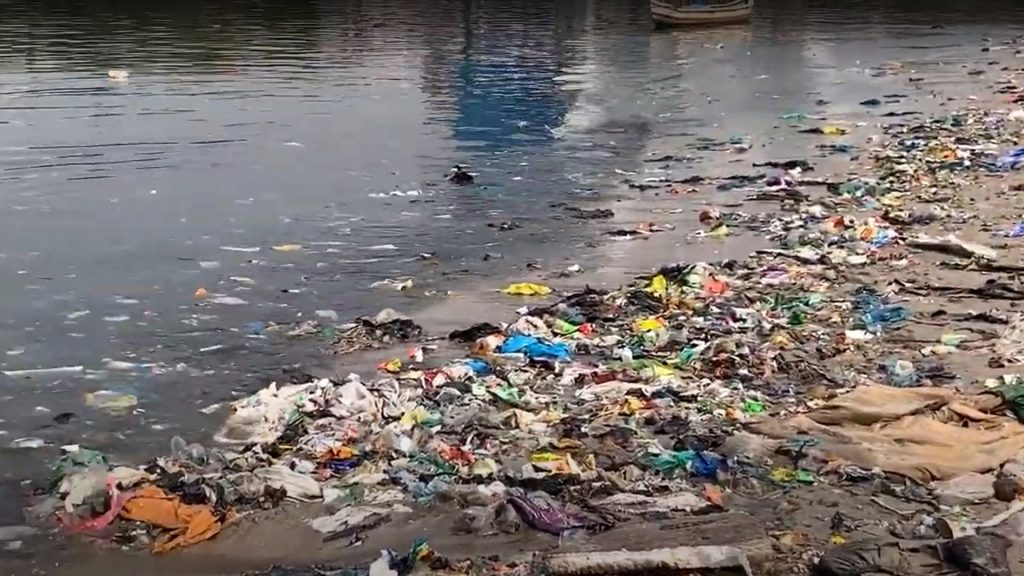
Earth5R’s Coastal Waste Recovery Model
At the heart of Earth5R’s coastal waste recovery approach lies a simple yet transformative philosophy: empowering communities through a circular economy model. Rather than treating waste as an end-point problem, Earth5R reframes it as a resource—unlocking environmental, economic, and social value.
Their model hinges on the belief that sustainable environmental action must emerge from the grassroots, with local communities trained, mobilized, and integrated into the solution. Earth5R’s on-ground model operates through a decentralized network of citizen volunteers, local residents, informal waste workers, and youth leaders. These participants receive hands-on training in waste segregation, collection techniques, and sustainability practices.
Educational workshops foster behavioural change, while Earth5R’s partnerships with schools, resident welfare associations, and municipal bodies ensure cross-sectional community engagement. Citizens are not just participants in cleanup drives—they are custodians of a cleaner coastline.
The organization has conducted hundreds of coastal clean-up operations across India, with major hubs in Mumbai, Chennai, Goa, and the Konkan region. In Mumbai alone, Earth5R volunteers have recovered thousands of kilograms of waste from hotspots like Versova Beach, Dadar Beach, and Girgaum Chowpatty. These cleanups are strategically organized on a weekly or bi-weekly basis, depending on community mobilization, tidal activity, and plastic accumulation zones.
Earth5R integrates data collection into these efforts, recording the volume, type, and brand of waste recovered—a method aligned with global best practices like Brand Audits endorsed by Break Free From Plastic. Technology plays a vital role in scaling this model. Earth5R’s mobile app enables volunteers to register for clean-ups, report polluted sites, and upload geo-tagged images and waste data.
This information feeds into a centralized GIS-based waste mapping dashboard, helping identify plastic hotspots and monitor trends over time. These insights enable Earth5R to plan more targeted interventions and share actionable data with local authorities. Recovered plastic waste is not simply discarded; it is channelled into recycling networks or upcycling hubs.
Earth5R collaborates with local waste aggregators, plastic processors, and artisans who repurpose recovered materials into eco-bricks, benches, tiles, or handmade goods. This circular economy approach creates livelihood opportunities, especially for informal waste workers and women-led enterprises, making the model both socially inclusive and environmentally regenerative. Through this holistic, tech-enabled, and community-centric strategy, Earth5R’s coastal waste recovery model sets a benchmark for localized climate action with global implications.
Community-Powered Solutions: Earth5R’s Case Studies in Coastal Waste Recovery and Marine Plastic Mitigation
Earth5R has implemented several impactful initiatives focused on coastal waste recovery and marine plastic mitigation. These case studies highlight the organization’s commitment to environmental sustainability through community engagement and innovative solutions:
Mithi River Cleanup Project
Earth5R’s Mithi River Cleanup Project exemplifies effective waste management through the use of solar-powered plastic recovery systems and active community involvement. The project has successfully removed over 11,100 tons of waste, leading to the revival of biodiversity, reduction in carbon emissions, and the empowerment of local communities through sustainable livelihoods.
Mumbai Beach Cleanup in Collaboration with Lufthansa
In partnership with the Lufthansa Group, Earth5R organized a beach cleanup initiative in Mumbai that attracted volunteers of all ages. This collaborative effort not only resulted in cleaner beaches but also raised awareness about the importance of community participation in environmental conservation.
Plastic Waste Management Initiative in Dehradun
Earth5R’s plastic waste management program in Dehradun serves as a successful case study of community-led environmental action. Through organized cleanup sessions and detailed data analysis, volunteers have significantly contributed to waste segregation and recycling efforts, promoting a culture of sustainability within the community.
Coastal Composting Awareness Program
Targeting the food, restaurant, and hotel industry, Earth5R conducted the Coastal Composting Awareness Program to educate businesses on waste segregation and composting techniques. Volunteers provided live demonstrations using the Earth5R app, emphasizing the importance of reducing coastal waste through sustainable practices.
These initiatives demonstrate Earth5R’s holistic approach to tackling marine plastic pollution, emphasizing the critical roles of community engagement, technological innovation, and education in fostering environmental sustainability.

Marine Plastic Mitigation Strategy
Earth5R’s marine plastic mitigation strategy is rooted in a preventive, systems-based approach that tackles the problem at its source while simultaneously addressing downstream impacts. It extends beyond cleanup operations to intervene at multiple points across the plastic lifecycle, with a strong emphasis on upstream solutions, community partnerships, and environmental education.
One of the cornerstones of the strategy is source segregation and upstream plastic prevention. Earth5R works directly with households, local businesses, and informal settlements to promote waste segregation at the point of generation. Training programs educate residents on separating biodegradable, recyclable, and non-recyclable waste.
This not only reduces plastic leakage but also improves the efficiency of municipal waste collection systems. In areas where municipal services are weak, Earth5R supports micro-collection centers that serve as interim nodes for sorted waste recovery. To better target interventions, Earth5R employs coastal surveillance and hotspot mapping.
Using a combination of citizen science, GIS tools, and drone imagery, plastic accumulation zones are identified along coastlines and estuaries. This data-driven approach enables the organization to focus cleanup efforts and design area-specific strategies. For example, recurring plastic hotspots along Mumbai’s Mithi River outfall have been identified and addressed through targeted action.
Earth5R also implements river-to-sea leakage control initiatives, recognizing that rivers are major conduits of plastic into the oceans. Collaborations with communities living along riverbanks include river clean-ups, riparian vegetation restoration, and the installation of floating barriers or waste-trapping booms to intercept plastic before it enters marine ecosystems.
These efforts are complemented by advocacy for improved urban stormwater and wastewater infrastructure. Multi-stakeholder collaboration is another vital pillar. Earth5R partners with municipal corporations, environmental NGOs, educational institutions, and coastal fishing communities to ensure broad-based participation.
In fishing villages, for example, Earth5R provides training on net disposal, ghost gear recovery, and eco-friendly practices, building environmental stewardship among some of the most affected groups. Equally important is behavioural change and education. Earth5R conducts sustainability workshops in schools, colleges, and public forums to raise awareness about marine plastics.
Campaigns like “My Waste, My Responsibility” and “Adopt a Beach” promote long-term community ownership. The use of storytelling, local language content, and interactive digital tools enhances the reach and retention of these messages. By integrating prevention, surveillance, community partnership, and education, Earth5R’s marine plastic mitigation strategy tackles pollution at its roots—offering a replicable blueprint for long-term ocean health.
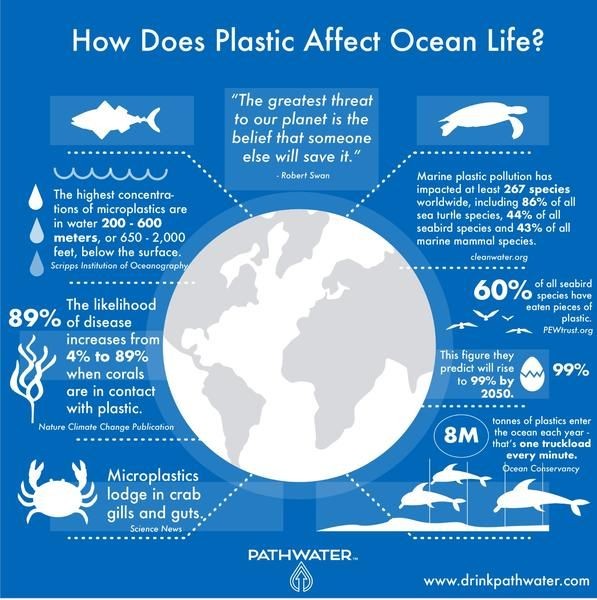
This infographic powerfully illustrates the devastating impact of plastic pollution on ocean life—highlighting threats to over 267 marine species and alarming rates of microplastic ingestion. It emphasizes the urgency of action, noting that 8 million tonnes of plastic enter the ocean annually, harming biodiversity and accelerating ecosystem collapse.
Scientific Validation and Measurable Outcomes
A key strength of Earth5R’s Coastal Waste Recovery and Marine Plastic Mitigation Framework lies in its data-driven and evidence-backed approach, which emphasizes transparency, accountability, and long-term impact assessment. Unlike many environmental initiatives that rely solely on anecdotal evidence, Earth5R systematically captures and analyzes quantitative and qualitative data to validate the effectiveness of its interventions.
The organization tracks several core metrics: tonnes of waste recovered, area cleaned, number of volunteers mobilized, and types of waste categorized. As of 2024, Earth5R has mobilized over 60,000 volunteers across India and facilitated the recovery of more than 200 tonnes of plastic and non-biodegradable waste from coastlines, riversides, and urban areas.
Each cleanup drive involves meticulous waste categorization—plastics are further divided into PET, LDPE, HDPE, multilayer packaging, and fishing gear. This classification allows Earth5R to monitor trends in consumption and littering and engage with producers on extended producer responsibility (EPR).
To assess ecological recovery, Earth5R conducts before-and-after environmental impact assessments, often in collaboration with academic institutions. These assessments document changes in coastal biodiversity, water quality, and plastic density per square metre.
For example, at Versova Beach in Mumbai, a multi-year intervention led to noticeable improvements in intertidal biodiversity, including the return of crabs and local fish species, supported by photographic and observational data collected by citizen scientists and marine biologists.Technology further enhances the robustness of Earth5R’s evaluations.
Using GIS-based mapping and data science tools, the organization creates spatial visualizations of pollution hotspots, plastic leakage pathways, and clean-up coverage. Time-series mapping helps identify trends, assess intervention effectiveness, and refine strategy. The integration of geotagged photographs, QR-coded waste bags, and volunteer logs contributes to a transparent and verifiable impact trail.
Although Earth5R’s model is still being scaled, its methodology has begun to attract academic and policy attention. Elements of the framework have been referenced in white papers and policy briefs on sustainable urban waste management and marine litter reduction. Earth5R is currently in discussions with research institutions for peer-reviewed studies that explore the model’s socio-environmental outcomes.
Testimonials from collaborators further validate the model. A joint letter from the Indian Institute of Science Education and Research (IISER Pune) praised Earth5R’s “unique integration of scientific rigour with grassroots mobilization.” Similarly, officials from the Maharashtra Pollution Control Board (MPCB) have highlighted Earth5R’s work as “an exemplary convergence of citizen engagement and smart data analytics for coastal waste management.”
Through continuous monitoring, scientific collaboration, and impact evaluation, Earth5R demonstrates how grassroots environmental action can meet the highest standards of scientific validation and policy relevance.
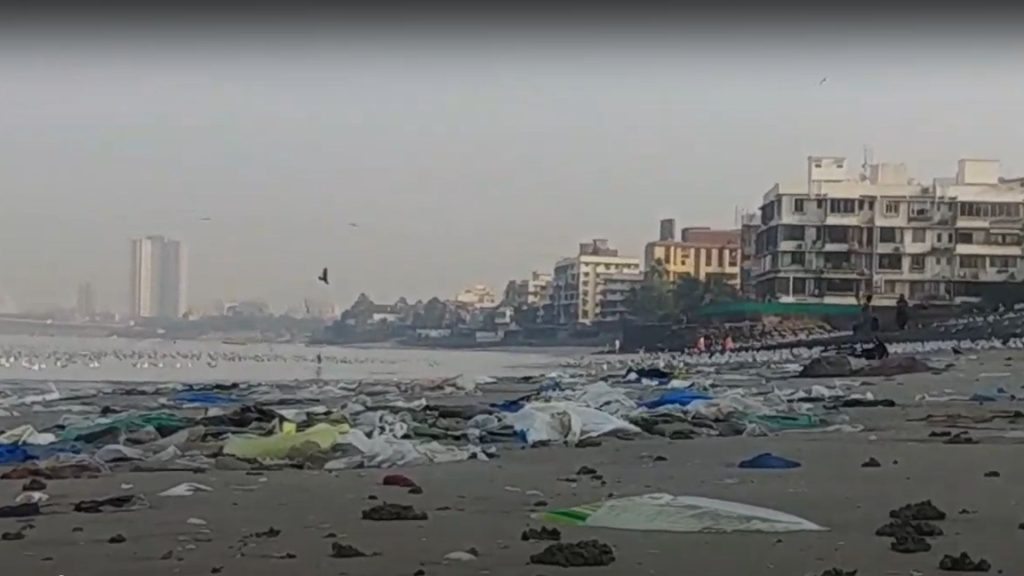
Policy Integration and Scalability
Earth5R’s Coastal Waste Recovery and Marine Plastic Mitigation Framework aligns closely with India’s evolving environmental sustainability policies. It is well-suited for integration into both national and municipal-level programs. The framework’s foundation in community-driven action and circular economy principles makes it highly compatible with existing policy goals.
In particular, it supports the Swachh Bharat Mission (Urban), which prioritizes citizen participation, waste segregation, and scientific waste processing. Earth5R’s emphasis on behaviour change and community-led waste recovery directly supports Swachh Bharat’s goals of sustainable sanitation and clean public spaces.
The framework also complements the objectives of Atal Mission for Rejuvenation and Urban Transformation (AMRUT), particularly in its focus on improving urban infrastructure related to waste and water management. Earth5R’s use of data tools and geo-mapping aligns with AMRUT’s smart city principles, allowing for integration into city-level digital dashboards that track sanitation and sustainability metrics.
Furthermore, the organization’s work supports the ambitions of India’s Draft National Marine Litter Policy, which calls for preventive approaches, stakeholder engagement, and promotion of circular economy models to reduce plastic leakage into the oceans. The national replication potential of Earth5R’s model is significant.
Its modular structure allows adaptation to different scales—village, town, or metropolitan—based on available resources and stakeholder participation. The use of low-cost, scalable digital tools like mobile apps and community waste tracking systems makes the model particularly suitable for integration into Smart City frameworks, where citizen-centric digital governance is a key pillar.
Globally, Earth5R’s framework has strong potential for replication in other coastal regions of the Global South. Countries like Indonesia, the Philippines, Nigeria, and Brazil face similar challenges of high marine plastic leakage and inadequate waste infrastructure.
These regions also have active informal waste economies that can be leveraged through inclusive environmental programs. Earth5R’s focus on community participation, local entrepreneurship, and low-tech circular solutions makes it particularly well-suited for such socio-economic contexts.
However, some barriers to implementation remain, including insufficient policy coordination across municipal departments, a lack of financial incentives for informal waste workers, and limited access to reliable data for local planning authorities.To address these challenges, Earth5R recommends several key policy interventions.
First, it suggests establishing dedicated urban coastal waste management cells under city administrations to ensure focused and coordinated action. Second, there is a need for financial and regulatory support to help circular economy entrepreneurs scale sustainable solutions. Third, Earth5R advocates for mandating citizen science and standardized data-sharing protocols to improve transparency and planning in coastal waste monitoring.
Finally, fostering public-private-community partnerships (PPCPs) is crucial to expand the scale and impact of coastal clean-up operations. These steps would create an enabling environment for more efficient, inclusive, and data-informed action. With the right policy backing, Earth5R’s model can evolve from a successful grassroots initiative into a scalable blueprint for national and global efforts in marine plastic mitigation and coastal resilience.
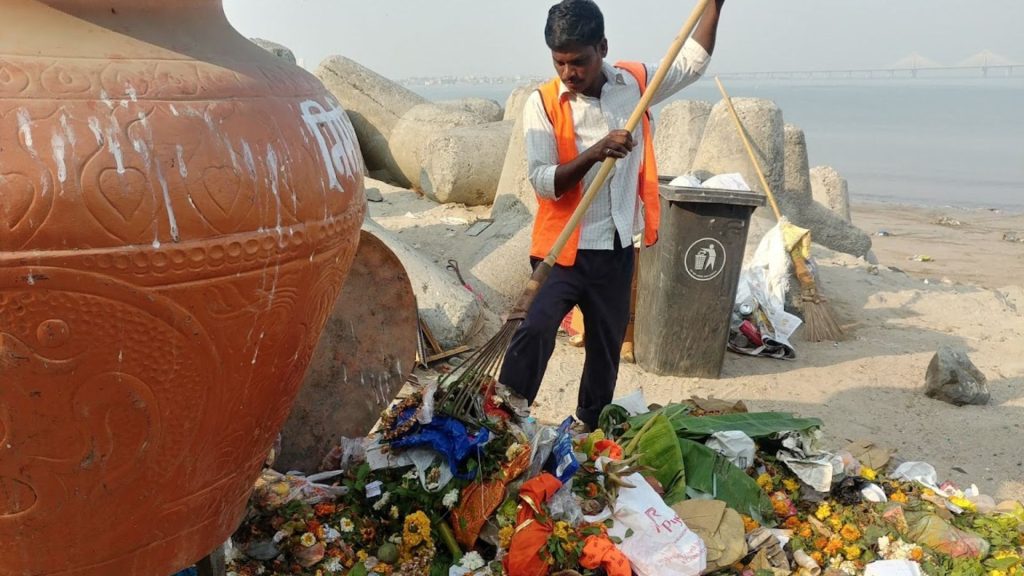
Building Resilient Blue Economies through Community Action
Earth5R’s Coastal Waste Recovery and Marine Plastic Mitigation Framework is a pioneering model for tackling marine plastic pollution. It brings together community-driven action, scientific rigor, and technological innovation to address a critical global challenge. The framework blends grassroots participation with data-centric planning and circular economy practices.
This makes it both scalable and replicable across diverse geographic and socio-economic settings. Earth5R has mobilized tens of thousands of volunteers and recovered hundreds of tonnes of waste from coastal and riverine ecosystems. Its work also includes hotspot mapping and support for local green entrepreneurship, resulting in measurable and transformative outcomes.
Crucially, Earth5R’s framework bridges policy and practice. It aligns with national missions like Swachh Bharat and AMRUT, while also offering relevance to global commitments such as the UN Sustainable Development Goals (SDGs), particularly SDG 11 (Sustainable Cities and Communities), SDG 12 (Responsible Consumption and Production), and SDG 14 (Life Below Water).
By enabling citizen science and fostering public-private-community partnerships, Earth5R has demonstrated how localized solutions can contribute to system-wide change. Looking ahead, Earth5R envisions a future grounded in blue economy resilience and the regeneration of coastal ecosystems.
This includes expanding its operations across India’s eastern and western coasts, deepening partnerships with coastal fishing communities, and advocating for policy frameworks that embed environmental justice and inclusive livelihoods. With ongoing advancements in waste tracking technology and a growing network of eco-conscious citizens, Earth5R is poised to lead a new generation of climate-resilient, ocean-friendly cities.
As the world confronts the growing crisis of marine plastic pollution, Earth5R’s model offers a hopeful, action-oriented blueprint—not just for clean beaches, but for healthier oceans, empowered communities, and a sustainable coastal future.
FAQs on Earth5R’s Coastal Waste Recovery and Marine Plastic Mitigation Framework
What is Earth5R’s Coastal Waste Recovery and Marine Plastic Mitigation Framework? It is a community-driven, circular economy-based model developed by Earth5R to prevent and remove plastic waste from coastal ecosystems using citizen participation, technology, and sustainable practices.
Why is marine plastic pollution a serious issue?
Marine plastic pollution harms biodiversity, disrupts food chains, poses health risks through microplastics, and causes economic losses in tourism and fisheries.
How does Earth5R’s model differ from traditional clean-up efforts?
Unlike one-off cleanups, Earth5R’s model integrates citizen engagement, upstream waste prevention, recycling linkages, and data-driven monitoring for long-term sustainability.
Which coastal areas has Earth5R worked in?
Earth5R has conducted clean-up and mitigation projects in areas like Mumbai’s Versova Beach, Mithi River, and other Indian coastlines, with scalable plans for broader replication.
What role do citizens play in Earth5R’s framework?
Citizens participate in clean-ups, segregate waste at source, contribute data via mobile apps, and attend sustainability training programs.
How does the framework promote the circular economy?
Recovered plastics are sorted, recycled, or upcycled into useful products, creating green jobs and reducing landfill and ocean-bound waste.
What kinds of waste are typically recovered?
Mainly plastic waste—like PET bottles, multi-layer packaging, fishing nets—alongside general non-biodegradable and organic waste.
How often are clean-up operations conducted?
Clean-ups are conducted regularly with seasonal intensification, often coordinated around monsoons and public awareness campaigns.
What technologies are used for monitoring and assessment?
Earth5R uses mobile apps, GIS mapping, drone surveillance, and citizen science tools to identify hotspots and track progress.
Has Earth5R conducted before-after impact assessments?
Yes, assessments include improvements in coastal biodiversity, water quality, and waste density reductions.
Are there peer-reviewed studies validating this framework?
While Earth5R is collaborating with institutions for future studies, elements of the model have been cited in white papers and policy briefs.
What are some key environmental outcomes of this framework?
Outcomes include the removal of over 200 tonnes of waste, biodiversity restoration, and reduced microplastic leakage in certain zones.
How does the model align with Indian government policies?
It aligns with Swachh Bharat, AMRUT, Smart Cities, and the Draft National Marine Litter Policy through its focus on waste segregation, circular economy, and community engagement.
Can the model be scaled nationally?
Yes, its modular design and tech integration make it suitable for replication across Indian coastal and riverine cities.
Is the framework relevant globally?
Absolutely. It is particularly applicable in Global South nations facing similar waste infrastructure and coastal pollution challenges.
What kind of partnerships does Earth5R rely on?
Earth5R collaborates with municipal bodies, NGOs, schools, fishing communities, corporates, and research institutions.
How are communities educated about plastic pollution?
Through workshops, campaigns, and the Earth5R app, which offers real-time data, tutorials, and interactive tools for awareness.
What is the Earth5R App used for?
The app is used to report waste, track clean-ups, provide sustainability content, and enable citizen science initiatives.
How are informal waste workers involved?
They are integrated into the value chain through training, waste collection partnerships, and entrepreneurship opportunities.
What is Earth5R’s long-term vision for coastal resilience?
To foster blue-economy resilience through sustainable coastal ecosystems, technology-led monitoring, and empowered communities leading environmental stewardship.
Join the Movement: Be a Coastal Guardian with Earth5R
Our oceans are suffocating—every year, over 11 million metric tonnes of plastic flow into marine ecosystems, threatening biodiversity, livelihoods, and our future. But this crisis is not irreversible. Earth5R’s Coastal Waste Recovery and Marine Plastic Mitigation Framework proves that empowered communities, driven by innovation and purpose, can transform this tide.
You don’t need to be a scientist or policymaker to make a difference. Whether you’re a student, business owner, policymaker, or concerned citizen, there’s a role for you in this movement. Volunteer for coastal cleanups, segregate waste at the source, or use the Earth5R App to report pollution hotspots.
Support circular economy initiatives by choosing recycled products and encouraging your community to do the same. Advocate for stronger environmental policies that prioritize marine health and waste management. The future of our coastlines depends on what we do today. Join Earth5R in creating sustainable, resilient, and plastic-free coasts. Together, we can protect marine life, empower local communities, and build a cleaner planet.
Take action now. Be the change. Be a Coastal Guardian.
Visit www.earth5r.org to get involved.
Let’s turn the tide—together.
~Authored by Ameya Satam
